What causes noises in Komatsu WA270-3H Excavators?
- RRebecca JonesSep 5, 2025
Noises can be caused by a low oil level. Make sure you top up with oil according to specifications.

What causes noises in Komatsu WA270-3H Excavators?
Noises can be caused by a low oil level. Make sure you top up with oil according to specifications.
What to do if my Komatsu WA270-3H Excavators engine does not start?
If the engine doesn't start, first ensure there is enough fuel. If fuel is sufficient, check for air in the fuel system and bleed it. Other potential causes include a faulty injection pump or nozzles, which may need replacement. Also, verify that the starting speed isn't too slow and that the valve clearance is correctly adjusted to ensure adequate compression.
What to do if my Komatsu WA270-3H brakes are not working?
If the brakes aren't working, it could be that the brake discs have reached their wear limit and need replacement. Air in the system can also cause this, so bleed the system. Finally, a faulty hydraulic system could be the cause, requiring repair.
What to do if the starter only turns engine over slowly on Komatsu WA270-3H Excavators?
If the starter turns the engine over slowly, it could be due to a low battery charge, so recharge the battery. Another potential cause is a faulty starter, which may need to be changed.
Why are the exhaust gases black at times on my Komatsu WA270-3H?
Black exhaust gases can occur if the air filter insert is dirty, requiring cleaning or replacement. Another cause could be faulty injection nozzles, which would need replacement. Also, check for low compression due to incorrect valve clearance and adjust it. Finally, the turbocharger might be faulty and need cleaning or replacement.
What to do if the exhaust gases are white or blue in my Komatsu Excavators?
If the exhaust gases are white or blue, it could be due to the oil level being too high, so adjust it to the prescribed level. Another cause might be incorrect fuel, so ensure you are using the prescribed fuel.
What to do if my Komatsu WA270-3H Excavators machine only runs slowly and not at full power?
If the machine runs slowly and lacks full power, the oil level might be too low. Ensure you top up the oil according to the specifications.
Why is steam emitting from the pressure valve of radiator cap on my Komatsu Excavators?
Steam emitting from the pressure valve, along with a temperature gauge in the red zone and a flashing control lamp, suggests several possibilities. The coolant level might be too low, requiring a top-up. There could be a loss of coolant, indicating a need to seal the cooling system. A loose fan belt should be retightened. Scale formation or dirt inside the cooling system necessitates cleaning. A dirty radiator exterior should be cleaned. A faulty thermostat needs replacement. The radiator cap could be faulty or loose, especially at high altitudes, and needs replacement or tightening. Lastly, a faulty coolant level sensor may require replacement.
What to do if my Komatsu WA270-3H machine does not drive?
If the machine doesn't drive, make sure the parking brake is released. Check that the drive direction lever is correctly engaged. Also, verify the oil level and top it up according to the specifications if it's low.
What to do if the warning lamp for oil pressure lights up with the engine running on my Komatsu WA270-3H?
If the warning lamp illuminates while the engine is running, it could be due to several reasons. First, check if the oil level is too low and top it up if necessary. Another potential cause is a dirty oil filter cartridge, which should be replaced. Also, inspect the oil pipe connection for any faults and repair them. Finally, the pressure sensor may be faulty and require replacement.
| Brand | Komatsu |
|---|---|
| Model | WA270-3H |
| Category | Excavators |
| Language | English |
Explains the importance of the manual for safe and troublefree operation.
Highlights economic benefits, ergonomics, and technology of the WA 270-3 model.
Lists CE-conforming equipment with part numbers, volumes, and weights.
Details procedures for securing articulated steering and lifting the machine safely.
Outlines steps for driving the machine onto transport vehicles and securing it during transport.
Presents machine data including dimensions, weights, operating values, and ratings.
Covers essential safety rules, devices, and personal protective equipment.
Details fire prevention, protection against asbestos, and working at high temperatures.
Explains ROPS, FOPS, attachments, and battery safety procedures.
Introduces the machine's general view and identifies control panels.
Explains the function of various indicators and warning lights on the instrument panels.
Details the operation of switches, levers, pedals, and armrests for machine control.
Outlines daily inspections and adjustments required before starting the engine and machine.
Guides on engine start-up, shutdown, driving, and gear shifting.
Details excavating, levelling, dozing, loading, and special operation precautions.
Covers procedures for winter operation and long-term machine shutdown.
Lists common electrical and engine system faults, their causes, and remedies.
Addresses issues in transmission, axles, brakes, steering, and hydraulic systems.
Guides on emergency driving, starting with jumper leads, and towing procedures.
Covers fundamental maintenance principles, machine preparation, and basic cleaning advice.
Provides a detailed schedule for maintenance tasks based on operating hours.
Details essential maintenance for hydraulic systems, air filters, engine oil, and fuel filters.
Lists key technical specifications for the machine's engine, driving speed, and capacity.
Details noise levels, vibration values, and maximum slope angles for safe operation.
Explains the ALS-Electronics system, its function, and safety precautions.
Provides critical safety guidelines for handling high-pressure accumulators.


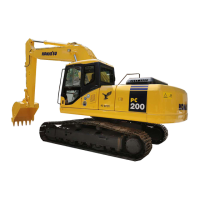
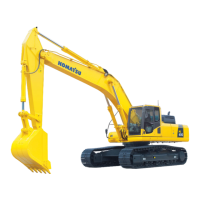
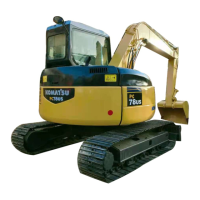
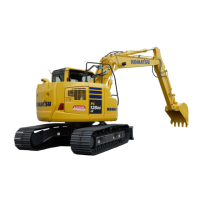
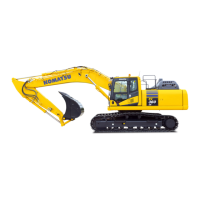
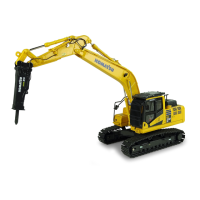


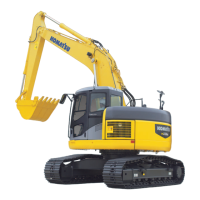
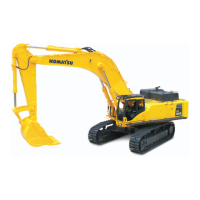
